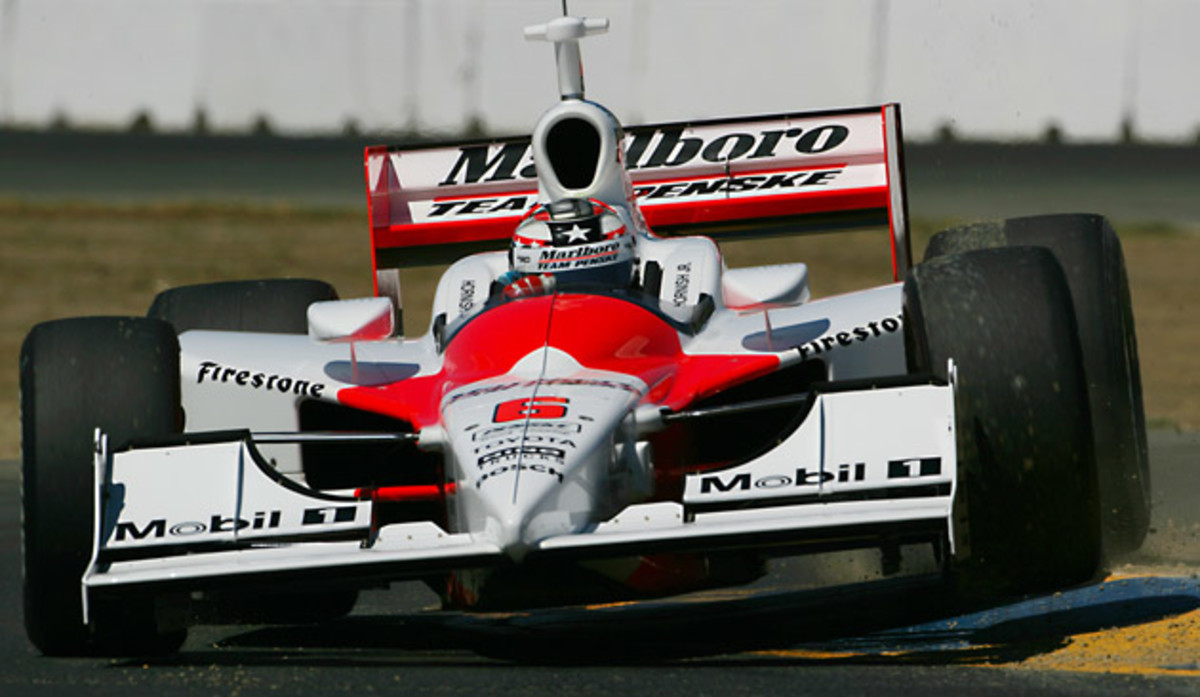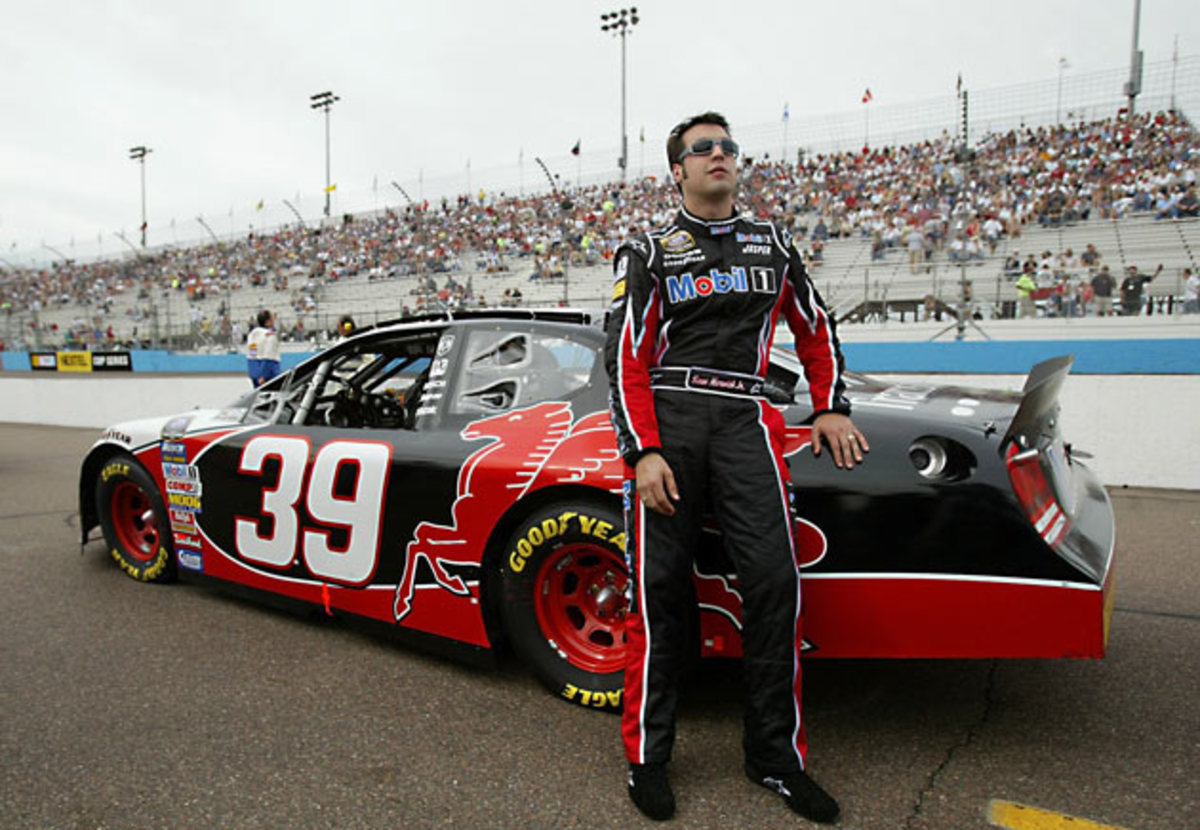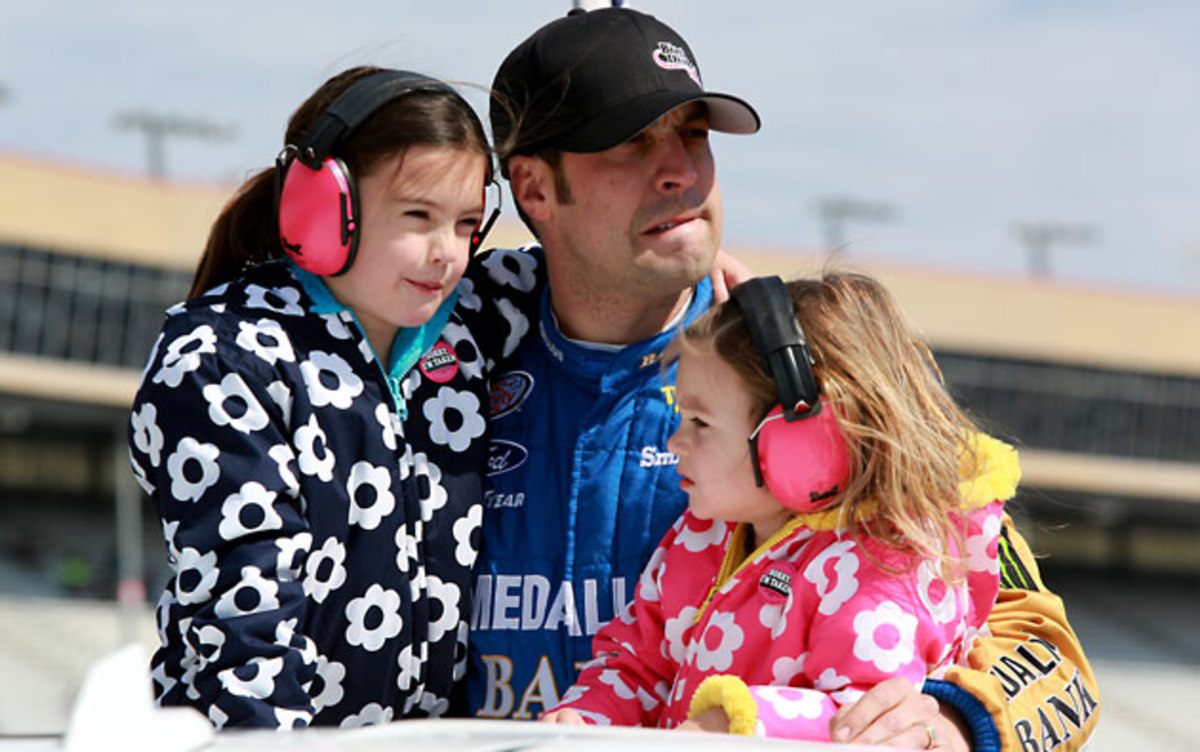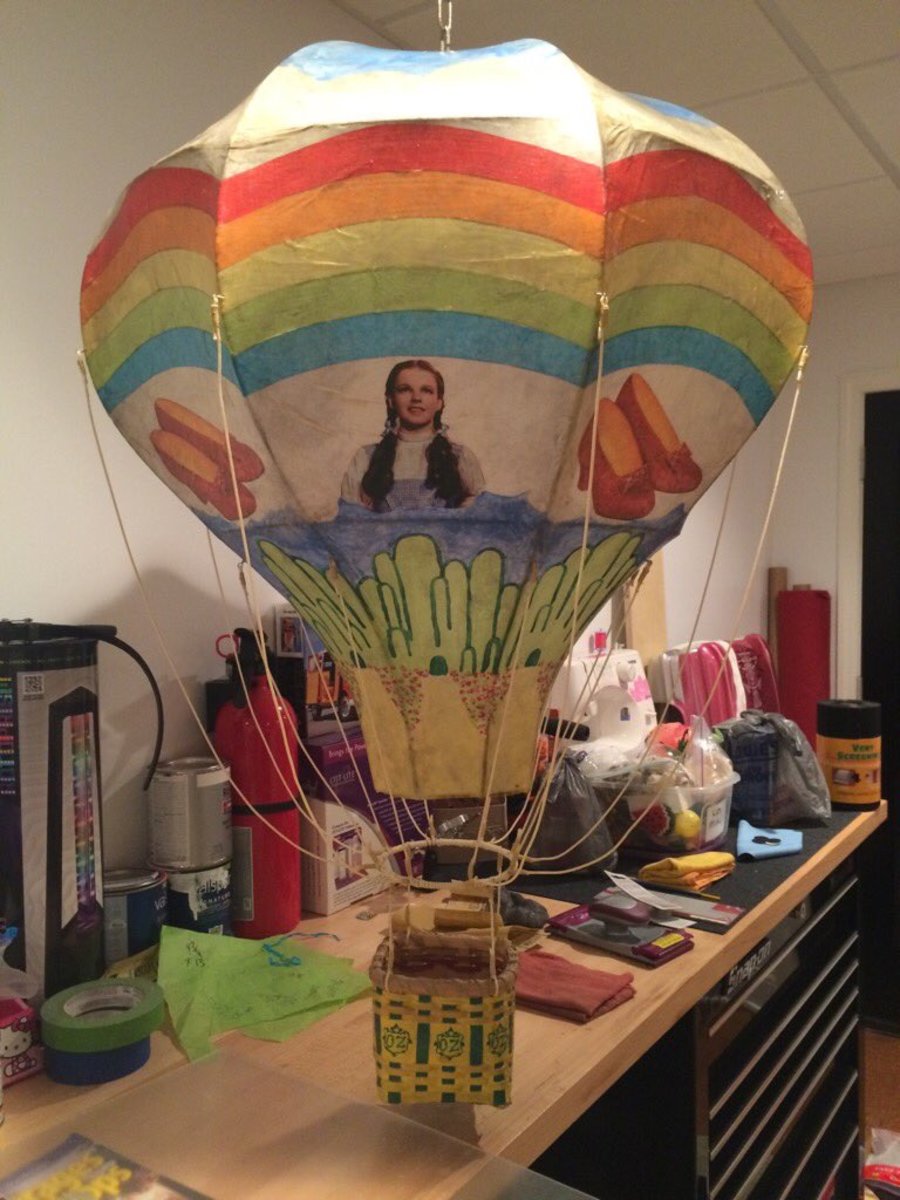Indy 500-winner Sam Hornish Jr. enjoying life as a racing fan

Last month Sam Hornish Jr. was kicking back at his home in Mooresville, N.C., watching that weekend’s IndyCar race on the streets of Long Beach, when the broadcast cut to a commercial. Amid the usual bevy of adverts hawking car stuff and other things was a Firestone tires spot hyping this year's Indianapolis 500—which will run, for the 100th time, on May 29.
The quick ad featured an even quicker flashback—a clip of a belaureled Hornish quaffing a jug of milk in a toast to his breathtaking triumph in the 90th running, back in 2006. Naturally, this got the attention of his young daughters, Eliza and Addison, who were quickly moved to ask what this much younger version of their 36-year-old father was doing on TV.
To explain, Hornish gathered the girls around a computer and called up a YouTube video of the race’s final four laps, which began with a restart. Hornish, in fourth position, got by Scott Dixon easily but appeared as though he’d be left behind by the first and second position cars of Michael and Marco Andretti—a father and son team hell-bent on ending what was then their family’s 37-year winless streak at the Brickyard.
That mission seemed accomplished when the then-19-year-old Marco rocketed past his old man a lap later, on the outside line. Actually, the moment was so charged with excitement that Rusty Wallace, the ex NASCAR Cup champion turned ABC TV race analyst, forgot where he was for a second there. “I really think Marco can do this!” Wallace shouted, as an estimated 250,000 Speedway spectators rose to their feet and thickened the humid Hoosier air with cheers. “I really think he’s got it! This kid, I believe, is gonna win this race, the most exciting Daytona 5—I’m sorry, Indy 500, ever!”
And though it had been nearly a decade since the guy watching this replay was on the other side of the computer screen, that didn’t make Hornish any less immune to the anxiety that had been his constant seatmate at the track. His hands glazed with sweat. His stomach churned. His mind raced. He wondered, Am I gonna make it?Am I gonna get the job done?
They were fair questions, ones many other observers were doubtless asking themselves at the time a few turns later, as Hornish deked his way past Michael Andretti and poked his nose into a tiny window inside Marco’s left rear wheel. When Marco immediately slammed that window shut, causing Hornish to fall far behind, it felt like that bold parry would go down as the move that broke the Andretti curse.
But then on the final turn, Hornish closed on Marco again, zoomed past him on the inside straightaway line and beat him to the finish by 0.0635 seconds. That time would stand as the second closest difference in 500 history until Ryan Hunter-Reay denied Hélio Castroneves’s bid for a fourth Borg-Warner trophy in 2014, by a whopping 0.0600 seconds.
Every 500 winner gets a scale replica to take home. Even the most modest drivers find an excuse to display theirs. Hornish? He keeps his in its box, unpacking it only upon request. “Very seldom does someone ask to see it,” he says. But when they do, “I like to be able to get it out and present it. You get the case out, you open everything up—it’s like you’re building up to something. Plus, it keeps it from getting tarnished.”

No amount of dust in the world could tarnish Hornish’s 500 victory, the product of his hard driving and a brave fuel strategy call by team owner Roger Penske. Along with being the closest win since Al Unser Jr. pipped Scott Goodyear to the line in 1992 (by .043 seconds) and the 14th of Team Penske’s record run of 16 triumphs at the Speedway, it also marked the first time in seven attempts that Hornish had finished the race. That was a remarkable run of frustration for a driver who seemed to have little trouble winning every place else on the IndyCar circuit.
During his eight years as an open-wheel racer, from 2000 until he jumped to NASCAR in ’08, Hornish was a mighty goliath, reaching the podium a staggering 47 times—19 on the very top step—while claiming three series championships. “That was just about a perfect fit for me, as far as car and driver and racing style,” Hornish says. “Like a glove.”
You’d think a guy that good would be trying to line up on the starting grid for the centennial edition of the Indy 500. But Hornish isn’t about that life anymore. He hung up his helmet at the end of last season, after an eight-year run in stock cars that fell well short of his open-wheel standard. Frankly, that’s a shame.
Hornish, after all, was a different sort of frontrunner—fresh-faced, American and so skilled at a time when open-wheel racing needed something to celebrate. After Speedway scion Tony George threw down a regrettable gauntlet and decided to build his own circuit (the IRL) around the 500 and a bevy of young, unproven talents, open wheel’s blueblood race teams and drivers packed up and left for their own league (CART/Champ Car). What followed was a 14-year civil dispute, from 1994 through 2007.
Hornish’s aptitude was not only the one thing both sides could agree on, it also was undeniable to NASCAR folks like Brian Campe, an Xfinity crew chief before he started calling the shots for Team Penske’s Juan Pablo Montoya. “I was a fan of Sam’s from watching IndyCar,” says Campe. “And then I got to work with him [in the Xfinity series]. Roger [Penske] just picks really good talent.”
James Hinchcliffe, our guest columnist for the season, goes even further, calling Hornish a legend. “A lot of guys who had successful careers before ’01-02 [when the competing open wheel series started merging and making peace] weren’t as competitive after that,” Hinchcliffe says. “But Sam, who was born and bred in IRL, was a phenomenal talent. It would’ve been cool to see how many more races and championships and 500s he would’ve won.”
Rare does a month go by that Hornish isn’t approached by people who recognize him from his racing days and tell him, You could’ve won five Borgs if you had kept at it. “Man,” he demurs, “it was hard enough just to win the one!”

Hornish had his reasons for quitting open-wheel racing while he was ahead, for joining a star studded Indy-to-NASCAR conga line that also includes AJ Allmendinger and Danica Patrick. Believe it or not, those reasons had less to do with pursing fame and fortune than trying out something Hornish never much considered after turning his first laps at age 11. “In the first four or five years of me racing, there was no thought of it being more than just a father-son activity,” he says. “Once I got to a point where there was a possibility that we might be able to qualify for Indianapolis someday, that was as lofty a goal as winning the Super Bowl.”
And when he finally conquered the Brickyard, he figured why not try stock car racing? He was on top of the world. “I wanted to challenge myself and see if I could get to the point where I was successful at it,” he says.
Alas, in NASCAR Hornish would come to be defined more by his 0-for-167 winless streak in the Sprint Cup series and his near misses on the Xfinity circuit—like the time in 2012 when he barely lost to Brad Keselowski in an undercard stock car race in Indianapolis, and that other time in 2013 when he barely lost the Xfinity points championship to Austin Dillon. There was much that Hornish took for granted about NASCAR racing—the variance in build quality between its hand-made cars, the unrelenting schedule, the fact that it takes more than just a phenomenal driver to go fast. “There’s so much teamwork that goes into NASCAR,” says Hornish, a three-time Xfinity race winner. “The races are longer, which means the crew chief and the spotter have to make more calls. All the pieces of the puzzle have to be put together that much better.”
The setbacks might’ve been easier to handle if Hornish weren’t so insular, anxiety riddled and self-flogging on the job. So in late-November 2015, after finishing 25th at the Cup season finale at Homestead, Hornish unharnessed himself one last time and exhaled. He hasn’t peeked in his rearview mirror much since.

There’s no need. Life after racing has kept Hornish in a spiraling heel-toe dance. The girls of course are a handful—and that’s before throwing his youngest, Sam III, into the mix. Regularly, they call on him to use his dexterity in new ways, by making all kinds of fanciful craft projects. “I did a Wizard of Oz hot air balloon for my daughters that lights up and kinda spins around by itself,” Hornish says. “I built my son a little VW bus from scratch, doing some sheet metal shaping. I’m kind of a perfectionist as far as those things go. I’ve been working on that.”
When his daughters’ school let it slip that they were having problems drafting substitute teachers, Hornish volunteered. “I’ve gotten to do everything from music to gym to pre-calculus,” says the man who views his supervisory services—which have taken him from pre-K classes up through high school—as equal parts payback and parental recon. “I was such a pain for my teachers when I was in school. And still having three young ones myself—8, 5 and 2 years old—it’s kinda neat to see how other kids act. It makes me really appreciate when I get home to be able to spend more time with them.”

Not surprisingly, some of that quality time is spent huddled around the TV watching IndyCar and NASCAR races. Now that his livelihood isn’t resting on the outcome anymore, Hornish can enjoy the action so much more. “I just made myself sick over it—especially over the 500,” he says. It hardly mattered whether he won the race or finished 25th; he’d start worrying about the next Indy the following day and keep worrying about it until it was all over again. It was a hellacious cycle.
All the time people tell Hornish, You could go back to IndyCars. Surely they believe he could make as badass a comeback as Juan Pablo Montoya, who redeemed his beleaguered racing reputation by winning at Indy last year. But why would Hornish even bother? Who needs the stress? “I love racing so much more now because I get to be a fan of it," he explains. "I watch the races. If I like who won, I’ll listen to the interview. If I don't, I can shut it off. It’s like being a kid again.”
Hornish’s only regret, really, is that his wife, Crystal, is the only member of his brood who’s witnessed his triumphant moments at the track in the flesh. “The kids were all born after my IndyCar career, and they weren’t at the NASCAR races I happened to win either.” So he’s carting the whole gang along back to Indy for this year’s 500 to ride in the parade and revel in many, many other pre-race festivities.
It’s important they know that, once upon a time, their dad was one of racing’s biggest wheels. The rest of us shouldn’t forget that, either. “The greatest part about it is I got to live it,” he says. “I got to race against the best drivers in the world not only in open wheel but in stock cars. I won races in both and had a lot of fun doing it.”
